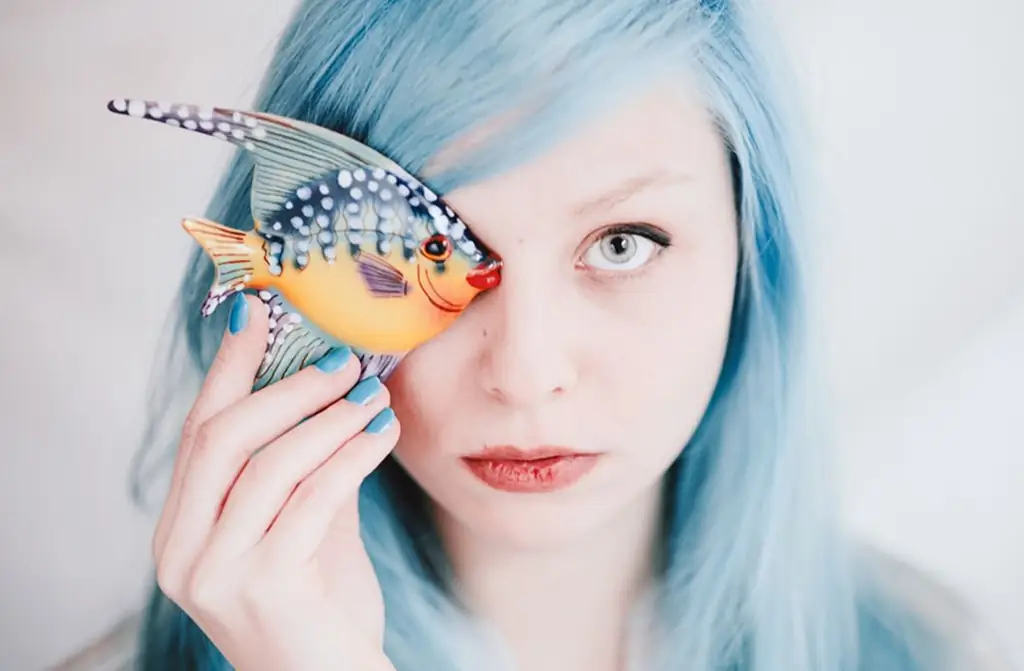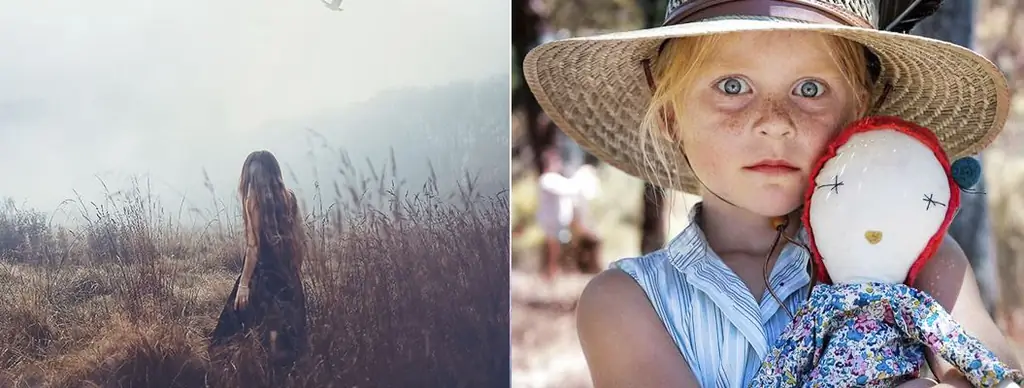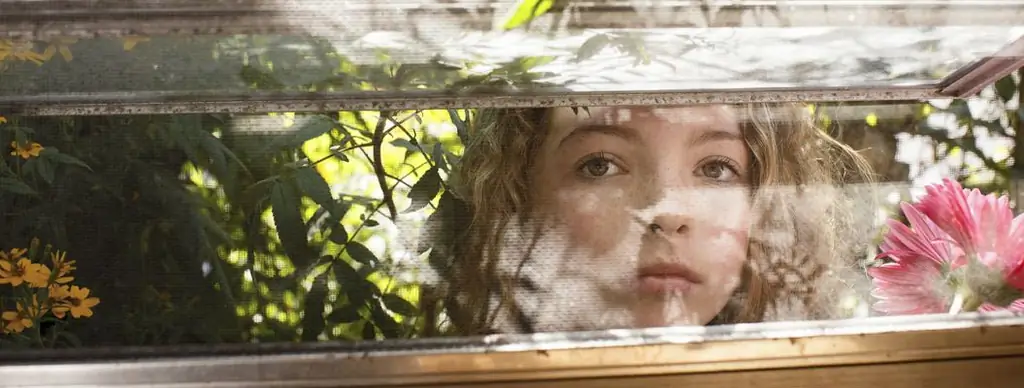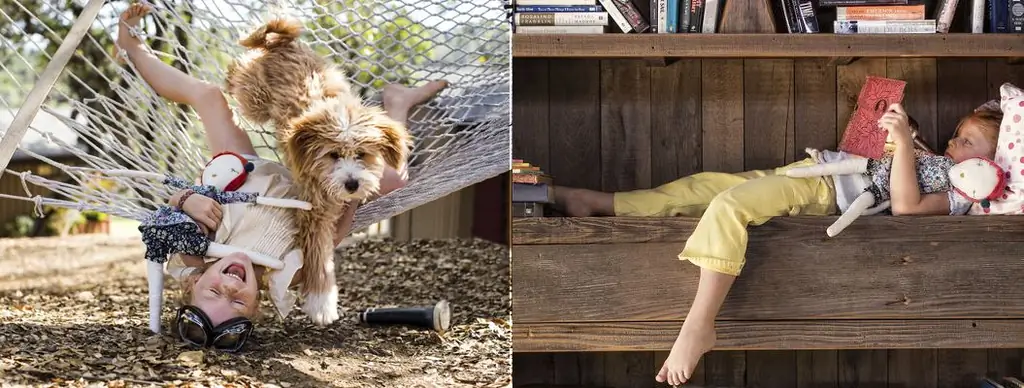- Author Adrian Jeff [email protected].
- Public 2023-12-17 05:06.
- Last modified 2025-01-24 14:09.

Mom, I'm scared! Why does a child have terrible dreams
Usually, we, adults, are calm about the fact that children may be afraid, because they are so small, inexperienced, they only learn the world. We know for sure that almost everything in the world can be explained. But sometimes childhood fears become a real test for us, parents, because we are often unarmed in front of them …
"Mom, I'm scared!" - the child wakes up in the middle of the night … “Did you have a bad dream? Nothing, it happens to everyone … sleep, do not be afraid … "- an attempt to calm the baby. Half an hour later again: “Mom, I'm afraid, I'm afraid! I had a terrible dream again! " During the night, you persuade you not to be afraid several times, you put the frightened child in the crib.
And the child begins to wake up almost every night. Persuasions, requests, explanations do not work. The feeling that he does not hear at all what they are saying to him - he repeats his "I'm afraid, I'm afraid" as if enchanted and asks to sleep together in the same bed. Then the parents are already worried - why is the child afraid?
Adult methods of dealing with childhood fear
Usually, we, adults, are calm about the fact that children may be afraid, because they are so small, inexperienced, they only learn the world. We know for sure that almost everything in the world can be explained.
But sometimes childhood fears become a real test for us, parents - because we are often unarmed in front of them. Waking up at night, afraid to stay in the dark or talking about creepy monsters, the child asks for help and protection. How can we fight against what we do not see, do not know, do not feel? Let's take a look at the most common ways to deal with childhood fears.
Persuasion
The first thing we usually do is persuade, explain that he has nothing to be afraid of, but the child bends his line full of emotions, only gaining momentum. Explanations and persuasion cannot help - the words seem to bounce off, not reaching the goal. This is the simplest and most ineffective way to deal with childhood fear.
All this simply passes by the child, without touching on the essence of the problem - fear. In this case, the situation simply does not change, although we try to find the right words.
Eventually we get tired of admonishing and just get angry. Sometimes parents use blackmail or try to create shame for fear. This breaks trust in the adult and, of course, does not help in solving the problem.
We develop resistance
And if persuasion, explanations just pass by, then more radical methods, such as an attempt to teach a child to "cope on his own," can aggravate the situation. Deciding to knock out fear with perseverance and patience, leaving the child alone with fear, we drive him into even greater fear.
Forcing the fearful of the dark to sleep in the dark or watch cartoons / movies scary for him, we try to temper the child. In doing so, we ignore the cause of the fear and at the same time expand its boundaries.
It is impossible for a child to cross the line of fear alone, especially if the parents are not on his side. After that, fears only grow, new forms appear. And the child's desire to share his misfortune with adults disappears - after all, you can no longer trust.
Creation
There are also various methods of getting rid of fear associated with creativity. Express fear in drawing, sculpting or otherwise, trying to bring it to another level of "communication". Fairy tales or games with a bias on disturbing themes, that is, the playing of fears, their "living". All this rich arsenal can help.
When we try to get hold of the cause of the fear, we turn it around, looking at it from different angles, but still we do not achieve lasting results. And all because, for example, the fear of Baba Yaga or the "gray wolf" does not imply the fear of Baba Yaga and the wolf. And the reason lies deeper - in the child himself.

Having tried various methods of dealing with childhood fear, we still have to admit defeat. Parents who are familiar with childhood fears are as powerless as their own children.
What is the cause of childhood fears?
All children are different. Nimble and calm, mischievous and brooding. The character of each child develops in ways invisible to the eye, we only after the changes begin to notice the personality traits of growing children. And if we see the personality traits that have entered into rights, then we are no longer able to change them, but this is not necessary.
Each property has two sides, like a medal. The manifestation of the property will be either "good" or "bad". So perseverance can become total stubbornness, and independence - uncontrollability. The bad news is that we cannot rid the person of their data. But the good news is that we can develop any property correctly, "the good side of the coin."
Personality properties systemically
Yuri Burlan at the training "System-vector psychology" identifies eight basic personality traits or vectors. Properties (vectors) are a set of desires and orientations of a person that determine the structure of his personality.
Each of the eight vectors is unique. The properties of the vector are innate and develop as a person grows up. Any manifestation of character is dictated by unconscious desires, aspirations inherent in vectors.
If we analyze children's fears systematically, then we see very simple and logical things. The human psyche is directly related to the body. Therefore, any property set by nature is provided with a bodily - erogenous zone.
Fear is a manifestation of the visual vector. In our case, the eyes are the erogenous zone. A person with a visual vector is distinguished by a much wider range of colors and shades, has imaginative thinking and great emotionality.
From birth to puberty, personality traits develop, and then are realized. The general feeling of pleasure from life depends on the correct development and realization, and various "deviations" - from the wrong one.
Emotional child
A kid with a visual vector grows up very emotional, empathetic and receptive. It is these children who gaze with delight at the sun, flowers and everything beautiful that is around. They feel sorry for dogs and cats, or they are afraid of even small insects.
The wide emotional range of visual children allows us to see abrupt changes in the child's mood: from bitter tears to cheerful laughter. Tantrums, often wet eyes, as well as indescribable delight from the simplest things - these are all two sides of the same coin.
A distinctive ability of a child with a visual vector is to create emotional connections with any inanimate object, be it a favorite bear or a cartoon character. It is often difficult for parents to imagine how “alive” a child's favorite toy may be.
Since childhood, inclined to drawing, amateur performances and even demonstrativeness, such children love to speak in public or are shy (again, two sides of the medal). And the words "look how beautiful" can be heard from them much more often than from other children.
What is fear and how to grow out of it
Fear in the visual vector is the basis. The basis for development from a feeling of fear for oneself into empathy (a feeling of fear for another). A visual child has imaginative thinking, this makes it possible to fantasize. Therefore, fears can lie not only in the physical world, but also in the plane of the imagination.

At the lowest level of development, the visual child is naturally afraid. His fears have yet to develop into the opposite feeling - love.
In the process of development, parents must correctly translate initial fear for themselves into empathy for others. The child must gradually go through all the stages of the development of the visual vector.
We can easily trace the implementation of the visual vector in society from the lowest to the highest level of development. Models, animal lovers and advocates, actors, artists, painters, designers, doctors, volunteers - these are all people who realize their potential at different levels. By guiding development in the right way, parents help the visual child to translate fear into empathy and love.
Systemic method of child development with visual vector
According to the knowledge that is given at Yuri Burlan's training "System-vector psychology", the development of the vector includes four stages.
In the visual vector, you first need to learn, at the level of inanimate nature, to appreciate everything that is beautiful in shape, outwardly beautiful. Then, at the plant level, we learn to love wildlife, plants and animals, we learn to feel sorry for them. The next level is animal, when the child learns to create emotional connections with people, to distinguish their feelings, to be able to empathize. The highest point of development in the visual vector is at the level of the ideas of humanism and high morality.
By determining the presence of a visual vector in a child, each mother can start its development with the most important thing - building a strong emotional connection. This is very significant for every child, but small eyes need an emotional connection very acutely, striving to realize their innate properties.
Correct games, correct fairy tales
A strong emotional bond with your child is the foundation of the foundation. But it is worth saying about the direct development of personality traits. So in our case correct games and fairy tales play a special role.
In order not to frighten the kid, you need to exclude all games with a "cannibalistic bias". This means that it is not worth bringing the child to hysterical laughter, trying to "bite the barrel" - it only scares him.
It may seem that it is fun, but such laughter through animal fear inflates emotions to the limit and brings only devastation. Wanting to be filled with emotion again, children may ask to play these games. So untwisting emotions on fear can become a habit.
An alternative to frenzied games can be a huge number of games aimed at withdrawing emotions in a different way. The smallest can play with colors, shapes, training curious eyes with various visual games.
Older children will be interested in role play, especially rescue and help games. Each toy can have its own name and a fictional story that will be woven into the child's life like a real life story. You can arrange funny toy tea parties and adventures: you just have to give ideas - and the child will develop the story of the game himself.
Also, a child with a visual vector will like playing the theater or performances where you can tell poetry or sing a song. Do not forget that you can arrange whole holidays, prepare in advance and invite everyone to the concert.

Doctor games are classics of the genre. Everyone should have a doctor's kit, because the help of a kind little heart may be needed at any time. Whether you're a diligent assistant or a convincing enough patient, this game will make your favorites.
Drawing and various applications are free for imagination, which should not be limited to a sheet of paper. For a child, you can select one wall or stick a special strip of wallpaper - so that there is where to swing in a burst of creativity.
All these games are aimed at ensuring that the child expresses himself outward, focusing his emotionality not inside, but on light, color, colors, shades of emotions, feelings outside, leaving no room for fears inside.
The selection of fairy tales and cartoons also needs a special approach.
As you already understood, bloodthirsty plots are unacceptable. Books about the unfortunate kolobok, the three pigs, Barmaley, Little Red Riding Hood and Babu Yaga should be burned first. Good fairy tales that make you empathize with the heroes are what you need. Be sure to choose books with high-quality beautiful illustrations: beauty is our everything.
You can come up with fairy tales on the go, or you can tell real stories about how you saved someone, helped someone. The more colorful details and descriptions of states there will be in your stories - the deeper they will leave an imprint on the young heart.
A list of recommended reading for children with visual vectors can be found here.
By choosing cartoons according to the same principle, you can add educational programs for children. And also good films such as Dolphin Story.
If a child is very worried about the heroes of a fairy tale or a movie and cries, he only needs to be supported, let him cry tears of empathy. These are not tears of hysterics that require attention to themselves, but anxiety for another. The result will not keep you waiting long - you cannot hide natural kindness.
And in case of tears of horror in front of, for example, a huge fly that has flown into the room, you can turn everything upside down and start feeling sorry for her, saying: “Poor Fly got lost … Yes, she is crying, poor thing! He wants to go to mommy, let's help her fly out …"
In addition to the above, it is necessary to devote as much time as possible to real communication with the child. If your child does not allow sleep, asks for a cat / dog and is more friends with a teddy bear than with a mother, you should think about whether he has enough current depth of relationships and emotional closeness?
By delving into his internal structure, understanding and supporting him, we give the child a basic sense of safety and security, without which normal development is impossible.
You can learn more about how to raise a fearless, truly kind-hearted and happy child at Yuri Burlan's training "System-Vector Psychology". Register for free online classes at the link:






